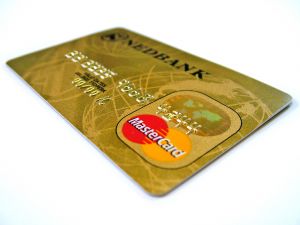Credit Card Bank Account
by Christine
(Langley, BC)

How to record credit card transactions
The company I work for has a credit card bank account and their main bank account. The person who does the bookkeeping (not me) has set up the accounting software so that A/R payments to the credit card account are posted directly to A/R from that account. As well, direct deposits to the main bank are posted to A/R.
I was taught in my bookkeeping class that the dollars in the credit card account should be transferred to the main account so everything tracks through one bank account.
Which is correct? Thanks.

Hi Christine,
This is how I record credit card transactions in QuickBook. You can decide if the information is helpful to you.
FOR PURCHASES MADE BY THE COMPANY
1. Setup a credit card type account (shows up in the current liability section of the balance sheet).
2. Record EACH credit card purchase / transaction using the "Expense" feature in QBO or the "Enter Credit Card Charges" in QBD. This ensures each expense is coded to the correct account/category. Do NOT enter these transactions as a "group total".
3. To make a payment on the credit card, use the "Transfer Funds" feature in QBD or "Transfer" feature in QBO. Your transfer would be "from" the bank account "to" the credit card account; CR Credit Card Account CR Bank Account ... OR ... you could use "Write Cheques" in QBD or "Expense" in QBO.
If the currency is the same between both account, you could setup a bank rule in QBO to book the transaction automatically based on the wording in "memo" field.
FOR PAYMENTS RECEIVED ON OUTSTANDING ACCOUNTS (A/R) (Simplified Explanation)
1. Setup a bank type account (shows up in the current assets section of the balance sheet) for the merchant account. If you search my site for "Stripe" or "PayPal", I have some examples of how I record / reconcile certain items in these types of accounts.
2. Book all customer payments received by credit card through the Accounts Receivable module. In QBO use the "Payment" feature; in QBD use the "Receive Payments" feature. This ensures each A/R subledger accurately tracks a customer outstanding balance.
The Customer Payment window in QuickBooks has a "Deposit To" field for you to select where the money received is
There are usually timing differences between merchant accounts and bank accounts. If it becomes too hard to reconcile because of the timing differences and the lump sum deposited into the bank operating account, setup a clearing account to run both sides of the transactions through. In QuickBooks, the undeposited funds accounts serves this purpose.
3. If you are automating your data entry by booking off of a bank feed, then I only setup bank rules to occur from one account. This also avoids/reduces the need for some app integrations. For example if Stripe transfers are done once a week into the bank operating account, then I setup the bank rules from the bank account and don't bother integrating Stripe transactions through an app. I prefer to book summary sales invoices ... but that is just me. I don't want the books cluttered with one time sales customers.
Some bookkeepers love their apps ... they are "App Happy". I personally believe that less is often times more ... including more profit for your bottom line. Apps have their place, just don't get caught up with "keeping up the Joneses" syndrome. Pick only one app at a time after researching whether it is the best fit for your business ... not just because everyone is using the app.
4. For me, I find the easiest way to record any complicated transaction is to follow the money and the paper trail ... and mimic it. Here's an example:
a. Customer makes a purchase and charges it on their store credit account (A/R). This creates the entry DR A/R CR Sales
b. Customer makes a payment on account at the end of the month using a credit card. The store uses a Visa merchant account to process all credit card transactions. This creates the entry DR Merchant Account CR A/R
c. The merchant company pays the store the next day and automatically deposits the funds to the store's bank account. This creates the entry DR Bank CR Merchant Account.
I hopes this helps. If not, post back in the comment box below.
Return to Learning QuickBooks.